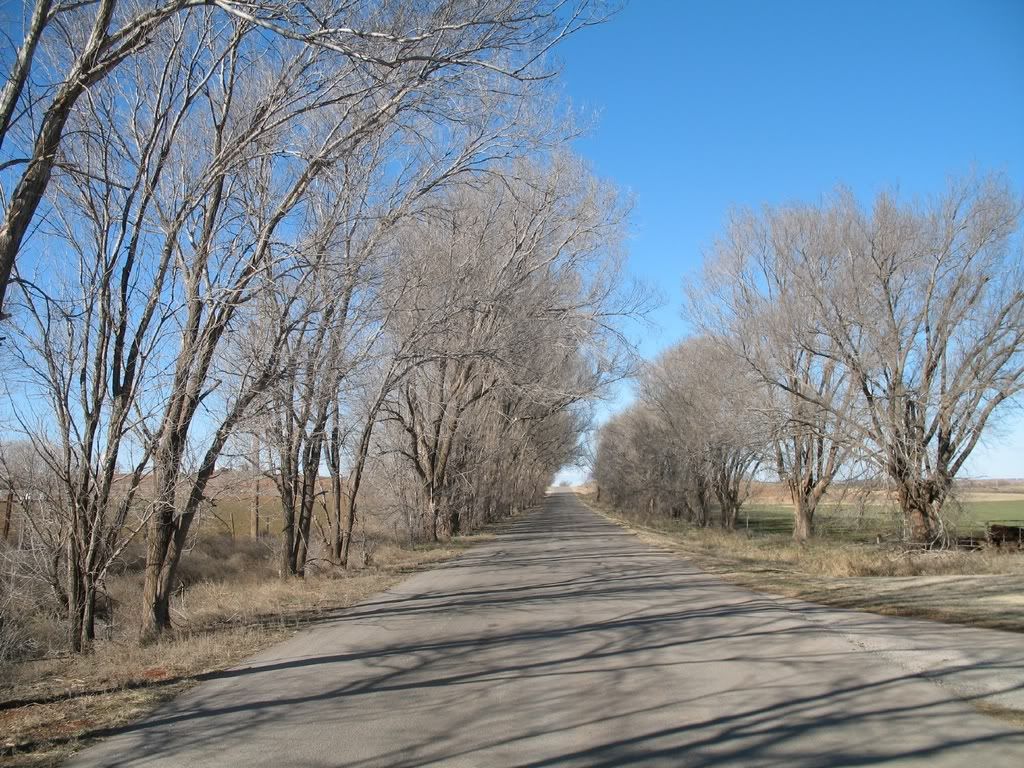What happened inside the walls of theIndian Boarding School that used to be to the right here?

Let’s look to history for some feasible answers.
(This video is over at Pretty Bird Woman House)
Updates (watch video “Older Than America”):
Updates Continued (two stories from NPR):
American Indian Boarding Schools Haunt Many
The late performer and Indian activist Floyd Red Crow Westerman was haunted by his memories of boarding school. As a child, he left his reservation in South Dakota for the Wahpeton Indian Boarding School in North Dakota. Sixty years later, he still remembers watching his mother through the window as he left.
American Indian School a Far Cry from the Past
These days, most American Indian children go to public schools. But remnants still exist of the boarding-school system the federal government set up for Indian children in the late 1800s.
Some people, such as U.S. officials at the Bureau of Indian Affairs, question whether the government should continue to be in the boarding-school business. Many students at these schools say they are a necessary escape from the poverty and addiction that plague many reservations.
(All bold mine)
Source
RICHARD PRATT -- "KILL THE INDIAN, SAVE THE MAN"
As we have taken into our national family seven millions of Negroes, and as we receive foreigners at the rate of more than five hundred thousand a year, and assimilate them, it would seem that the time may have arrived when we can very properly make at least the attempt to assimilate our two hundred and fifty thousand Indians, using this proven potent line, and see if that will not end this vexed question and remove them from public attention, where they occupy so much more space than they are entitled to either by numbers or worth.
Children are educated to become responsible and free thinking adults in the future; however, those were not Elazor Wheelock’s goals when he began Dartmouth College in 1769.
To the contrary of genuine education’s goals, Wheelock’s Indian College in Hanover, New Hampshire and the Indian Boarding Schools that followed had these things
Source
...cultural destruction, forced assimilation, and military regimen were popularized by Richard Henry Pratt, who started the Carlisle Indian School in 1879, and became cornerstones of most Indian boarding schools in the United States.
as the goals. So, just how did they come into reality?
Christian denominations were given power to build them on reservations as a result of Ulysses S. Grant’s “peace policy.”
Source
The policy pursued toward the Indians has resulted favorably, so far as can be judged from the limited time during which it has been in operation. Through the exertions of the various societies of Christians to whom has been entrusted the execution of the policy, and the board of commissioners authorized by the law of April 10, 1869, many tribes of Indians have been induced to settle upon reservations, to cultivate the soil, to perform productive labor of various kinds, and to partially accept civilization.They are being cared for in such a way, it is hoped, as to induce those still pursuing their old habits of life to embrace the only opportunity which is left them to avoid extermination.
I recommend liberal appropriations to carry out the Indian peace policy,
not only because it is humane, Christian like, and economical, but because it is right.
Those Christian denominations also had some measure of control with the B.I.A., yet only in terms of carrying out the “peace policy” on reservations. Now that the general historical context has been set with a few specifics; consequently, what were the means to the “cultural destruction and forced assimilation?” Clearly put, it’s at least categorized into the following: physical, mental, emotional, spiritual, sexual, and neglectful abuse with at least illness and poor sanitation which sometimes even resulted in death. Ironically, Friends of the American Indian and Thomas Morgan believed those were merely the lesser evils.
Source
The choices seemed simple and stark to the reformer movement — either kill all the Indians or assimilate them into white civilization through education.
Source
"We must either fight Indians, feed them, or else educate them. To fight them is cruel, to feed them is wasteful, while to educate them is humane, economic, and Christian."
Some examples of the extraordinary abuse and death in moreover extremely poor sanitation conditions of the Indian Boarding Schools are as follows:
Source
When they got to Carlisle, the students were extremely homesick. Their long hair was cut. One boarding school student, Lone Wolf of the Blackfoot tribe, remembered:
"[Long hair] was the pride of all Indians. The boys, one by one, would break down and cry when they saw their braids thrown on the floor. All of the buckskin clothes had to go and we had to put on the clothes of the White Man. If we thought the days were bad, the nights were much worse. This is when the loneliness set in, for it was when we knew that we were all alone. Many boys ran away from the school because the treatment was so bad, but most of them were caught and brought back by the police."
Source
They were forbidden to practice their religion and were forced to memorize Bible verses and the Lord’s Prayer.
Source
Rose was strapped for speaking her language. This is a common practice in schools all over the place at the time. Her open hands were hit with a large thick leather strap, many times.
I received the strap on several occasions, although not as harshly as Rose did in my story. I did see many native children whose hands were strapped so long and hard that they were blistered for days, as though they had been burned with fire.
Source
Indian Boarding School Abuse – Including Child Molestation
In the late 19th century, the Bureau of Indian Affairs (in conjunction with various churches) placed thousands of Native American children into Indian Boarding Schools. At the boarding schools, the children were forced to give up their Indian heritage and were forbidden from speaking their native languages. They were routinely beaten and sexually abused, and some even died.
Here is a letter that author and professor of American Studies at the University of Minnesota, Brenda J. Child posted,
Boarding School Seasons: American Indian Families, 1900-1940 (North American Indian Prose Award Series) (Paperback)
by Brenda J. Child,that informs a parent of the death of its child from an Indian Boarding School.

(from photobucket)
(Italics mine)
Source
(letter is no longer up, this is the old address)
Dear Sir,
It is with a feeling of sorrow that I write you telling of the death of your daughter Lizzie. She was sick but a short time and we did not think her so near her end. Last Wednesday I was called away to Minneapolis and I was very much surprised upon my return Saturday evening to find she was dead, as they had given us no information except she might live for a number of months. Those that were with her say she did not suffer, but passed away as one asleep. I am very sorry that you could not have seen your daughter alive, for she had grown quite a little and improved very much since you let her come here with me. If we had known she was going to live but so short a time, we would have made a great effort to have gotten you here before she died.
So wrote the superintendent of Flandreau Indian School to the father of a student who died of tuberculosis in a government boarding school in 1907. ...Hundreds of children like Lizzie died at boarding school, never to return to their families and communities.
Source
Meriam Report: GENERAL SUMMARY OF FINDINGS AND RECOMMENDATIONS
The survey staff finds itself obliged to say frankly and unequivocally that the provisions for the care of the Indian children in boarding schools are grossly inadequate.
The outstanding deficiency is in the diet furnished the Indian children, many of whom are below normal health.
The diet is deficient in quantity, quality, and variety. The effort has been made to feed the children on a per capita of eleven cents a day, plus what can be produced on the school farm, including the dairy. At a few, very few, schools, the farm and the dairy are sufficiently productive to be a highly important factor in raising the standard of the diet, but even at the best schools these sources do not fully meet the requirements for the health and development of the children. At the worst schools, the situation is serious in the extreme...
Next to dietary deficiencies comes overcrowding in dormitories. The boarding schools are crowded materially beyond their capacities. A device frequently resorted to in an effort to increase dormitory capacity without great expense is the addition of large sleeping porches. They are in themselves reasonably satisfactory, but they shut off light and air from the inside rooms, which are still filled with beds beyond their capacity.
The toilet facilities have in many cases not been increased proportionately to the increase in pupils, and they are fairly frequently not properly maintained or conveniently located. The supply of soap and towels has been inadequate...
What is a modern consequence of all this? Boarding School intergenerational trauma, which has been being addressed by those indigenous people who still suffer from its devastating effects.
Source
Working to heal the wounds of boarding school
United Nations panel hopes to undo the damage caused by U.S. government's Indian boarding school policies
By Karen Lynch
“People in Indian country are still becoming aware of the effects of boarding school trauma,” said Dr. Eulynda Toledo-Benalli, Dine’, currently performing boarding school healing project research with the Navajo people. “This is something about our history that is not being talked about in a way that encourages healing from its intergenerational trauma...”
As a panelist, Dr. Toledo-Benalli said the pain she suffered as a second-generation survivor affected not only herself but her children, as well. “Many times I have said to my children that I’m sorry for the way I treat them. This is so, because parents learn parenting skills from their parents. It is said that the oppressed become the oppressors.
As Dr. Toledo-Benalli talked about the painful memories as a survivor, the memory of her father who was “snatched and taken to Colorado, to a place that he did not know even existed. My mother who was herding sheep was also snatched.
The Wellbriety Movement helps with boarding school intergenerational trauma as well.
Source
The Healing Forest Model
The unhealed forest (community, left) transforms itself into a healed forest (right) by participating in and utilizing Wellbriety Movement activities, programs, and learning resources. The destructive roots of anger, guilt, shame and fear of the unhealed forest become the four gifts of the Sacred Hoop: Forgiving the Unforgivable, Healing, Unity and Hope. The wounded trees become healthy trees and the community participates in wellness involvements, such as, sober powwows, tradition, culture and spirituality. These are some of the gifts of the Wellbriety Movement.
(Medicine Bluffs)

Having looked to history for some feasible answers as to what happened inside the walls of that Boarding School, as well as the definition of historical trauma and one helpful solution, I also suggest reading:
Tim Giago’s book “Children Left Behind: The Dark Legacy of Indian Mission Boarding Schools,”
and jenniestarrish’s diary Kill the Indian, save the man at Native American Netroots.
In my family's case, my dad was sent to a boarding school about 800 miles from home. This was in the early 1930's and that was an incredible distance to cover in those years.
I hope with all my heart that those relatives, known and unknown who still suffer from
boarding school intergenerational trauma are able to the find peace and resolution that they need for themselves and for their loved ones.


